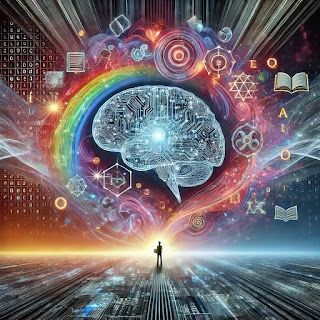The world of artificial intelligence (AI) is evolving rapidly, bringing about significant changes in how we work and live. By 2025, AI will play a vital role in enhancing productivity across various sectors. From automating tedious tasks to enabling smarter decision-making, these advancements promise to reshape our daily workflows. This article highlights five innovative AI tools that will become essential for maximizing productivity in the near future.
Hyper-Personalized AI Assistants: Your Digital Productivity Partner
AI assistants are no longer just for scheduling meetings. By 2025, they will anticipate your needs and provide customized support. Imagine having an assistant that knows your preferences and helps you stay ahead of your tasks.
- Current Examples: Tools like Google Assistant and Microsoft Cortana are evolving rapidly. They are learning user habits and preferences, becoming smarter each day.
- Maximizing Usage: To boost efficiency, regularly feed these assistants feedback about your preferences. This allows them to adjust and offer better suggestions.
AI-Powered Content Creation and Editing Tools: Streamlining Communication
Creating high-quality content can be time-consuming. AI is stepping in to streamline this process. In 2025, expect tools capable of generating articles, reports, and marketing materials with minimal human input.
- Market Growth: According to recent data, AI content tools are expected to reach a market value of $2 billion by 2025.
- Best Practices: Use AI as a first draft generator, then refine the output. This keeps content unique and of high quality while saving time.
Intelligent Automation for Repetitive Tasks: Reclaiming Your Time
Robotic Process Automation (RPA) is transforming how businesses handle repetitive tasks. By 2025, automation will be even more prevalent, freeing employees to focus on strategic projects.
- Industry Application: Sectors like finance and healthcare already utilize AI for automating tasks. Statistics indicate that companies reporting high automation levels see productivity boosts of up to 40%.
- Job Changes: As automation takes over mundane tasks, job roles will evolve. Employees will need to develop skills to work alongside AI technologies.
AI-Driven Project Management Tools: Enhanced Collaboration and Efficiency
Project management is set to become more efficient with AI. Tools that help with task assignment and progress tracking will transform how teams collaborate in 2025.
- Current Tools: Options like Monday.com and Asana are already integrating AI features, such as workload balancing and deadline predictions. Pricing ranges from free to $20 per user/month.
- Improving Communication: AI can highlight bottlenecks and enhance team interaction, making project workflows smoother and faster.
Predictive Analytics for Enhanced Decision-Making: Foresight in Your Workflow
Making informed decisions is crucial for success. By 2025, predictive analytics tools will become essential for anticipating challenges and leveraging opportunities.
- Real-World Applications: Companies like Netflix use AI analytics to predict viewer preferences, enhancing user experiences. This kind of foresight can significantly impact business strategies.
- Implementation Tips: Regularly analyze data for emerging trends. Begin with small datasets to ease into predictive analytics.
Conclusion: Embracing the AI-Powered Future of Work
The five AI tools discussed are set to revolutionize productivity by 2025. From personalized assistants to intelligent automation, these innovations will help individuals and organizations work smarter, not harder. As AI becomes integral to our processes, adapting and integrating these tools will be essential for maintaining efficiency.
Explore the potential of AI tools now to enhance your productivity and stay ahead in your field. The future of work is not just about technology; it’s about embracing possibilities for growth and improvement.




.jpeg)
.jpeg)